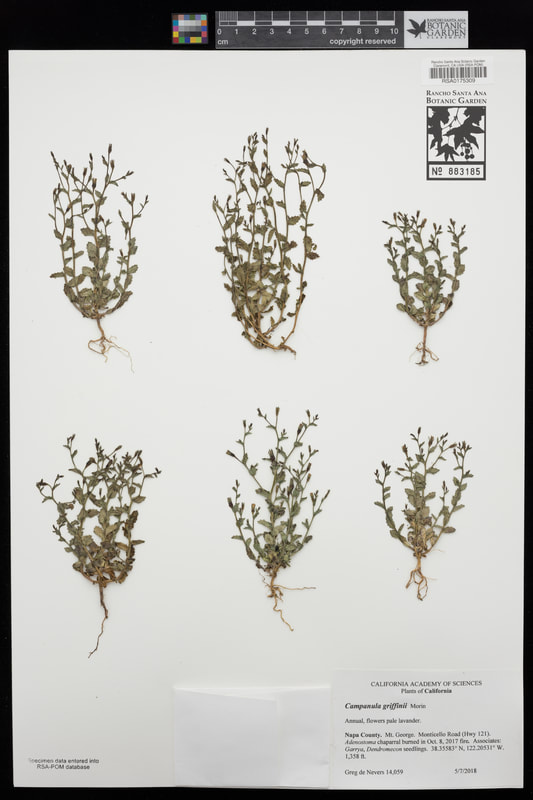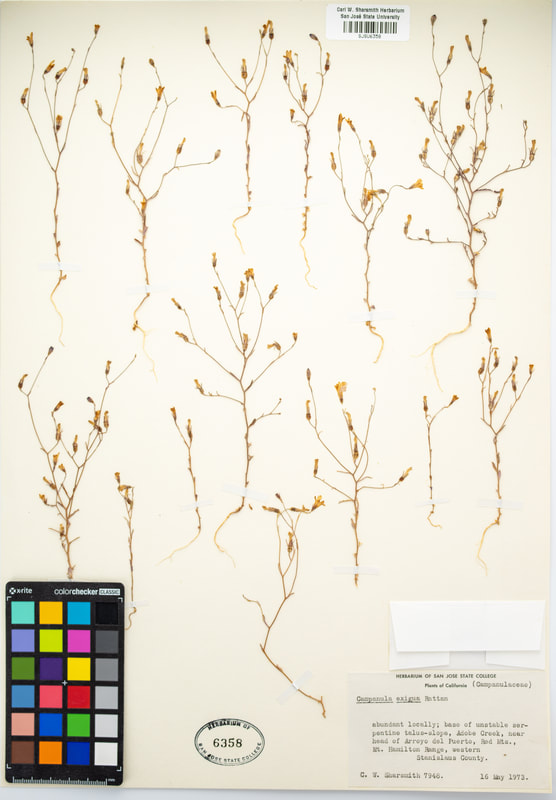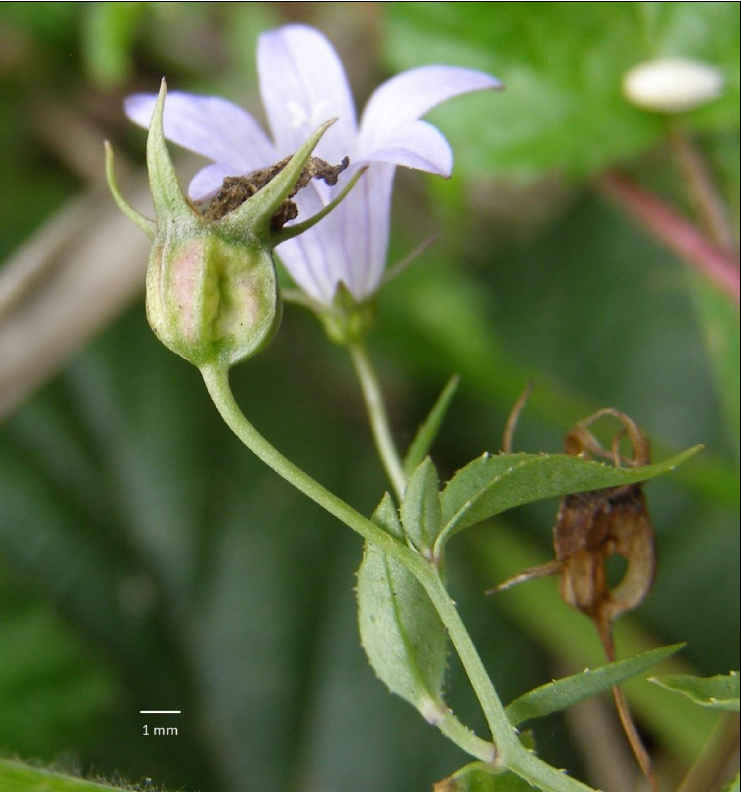Morin, N. Taxonomic changes in North American Campanuloideae (Campanulaceae). Phytoneuron (2020). 49:1-46
New species of bellflower in North America
If you think that all plant species have already been discovered and named, think again. Even in our own backyard, scientists are continuing to uncover evidence that re-shapes our understanding of plant diversity.
As a recent example pertinent to our California flora, we have taxonomic work of Dr. Nancy Morin, a researcher with the UC and Jepson Herbaria. While working on the Flora of North America, Morin noticed that one particular group of bellflowers, the genus Campanula, appeared to consist of many species that may not be as closely related as scientists may have once thought. Thus, she embarked on a journey of taxonomic revision, the gathering and re-examination of evidence used to delineate and describe species.
Re-defining species is an enormous task, requiring the researcher to gather data of many kinds. To decide the boundaries of the species and characteristics that define then, Dr. Morin had to gather distributional data (where the plant lives), ecological data (the environments in which the plant is found), morphological data (what the plant looks like), historical data (how the plant has previously been named or described), and often, genetic data (the species' DNA). Fortunately, herbarium specimens represent many of these data types, and as more historical records are digitized and imaged, Morin had access to an increasing wealth of botanical data. Dr. Morin downloaded herbarium specimen data from GBIF, viewed specimen images, and spent many hours poring over the physical specimens in and from many herbaria. (In the acknowledgements of her paper, she cited visiting 10 herbaria and receiving loans from 82, eleven of which are members of the CAP Network!)
Herbarium specimens of species formerly in the genus Campanula according to Morin's taxonomic treatment, from the California Botanic Garden Herbarium (left), San Jose State University Herbarium (center), and UC Santa Barbara Herbarium (right)
Upon reviewing the evidence, Dr. Morin concluded that this North American clade of Campanula should actually be split into eight genera consisting of 12 species. Six of these genera are new to western taxonomy, and Dr. Morin took this opportunity to name several after prominent botanists.
| One new genus Dr. Morin described is Eastwoodiella, named after the famed Alice Eastwood (1859-1953). Eastwood was a prolific botanist and collector across the United States who authored over 310 articles and named 395 species during her career. Eastwood is particularly famous for saving hundreds of plant specimens during a devastating fire at the California Academy of Sciences by lowering them out of a window with makeshift ropes. This unique species is endemic to wet places of coastal California, from Santa Cruz county to Mendocino county. Eastwoodia californica in the field. [Photograph from Morin 2020, used with permission from Nancy Morin] |
Three of the new genera are named after currently living botanists:
- Ravenella is named in honor of Peter H. Raven, current President Emeritus of the Missouri Botanical Garden and, in Morin's words, an "unstinting [advocate] for plants of the world and their study" (p. 13).
- "Smithiastrum is named in honor of James Payne Smith, Jr., emeritus faculty member in the Biology Department of Humboldt State University; a pioneer in plant conservation, authority on uses of plants especially by native peoples and on the toxicity of plants" (p. 21).
- Furthermore, "Poolea is named in honor of Jackie M. Poole, botanist with the Texas Parks and Wildlife Department for more than thirty years, an effective and passionate advocate for plant conservation, especially of the Texas flora" (p. 27).
In this way, herbarium specimens and the researchers that use them also represent a unique intersection between science and history: the plants, but also the people who tirelessly explore the natural world and eagerly share their discoveries.
Glossary
- Clade - a group of organisms believed to have been derived from a common ancestor; a grouping of closely-related organisms
- Genus (plural: genera) - a taxonomic category that groups species together into closely-related groups. Genus is less broad than family but more general than species.
- Taxonomic revision - the process of gathering and analyzing evidence for the evolutionary relatedness of taxa to one another, including the potential naming, re-naming, or re-organizing of species, genera, or other taxonomic groups



